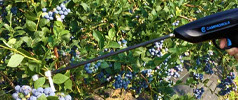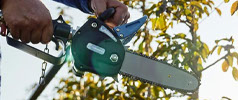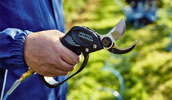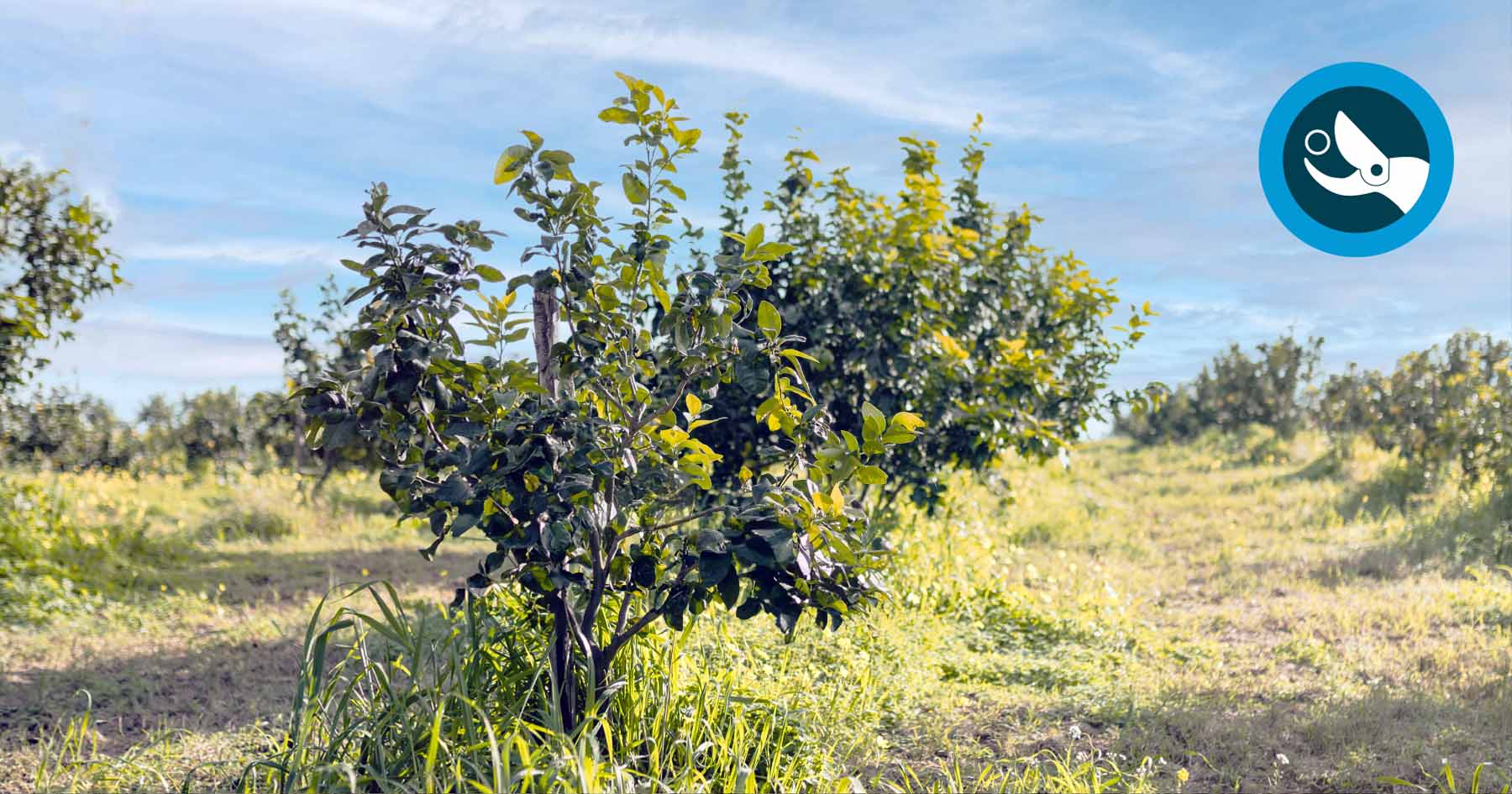When pruning lemon trees, we need to be very familiar with the periods during which to intervene and with the techniques used to cut.
The plant (botanical name Citrus limon), a member of the Rutaceae (citrus fruit) family, is an evergreen that in some varieties can bloom up to 5 times a year; the lemons are named after their ripening period: “primofiore” (first-flowering), winter, “bianchetto”, “verdello”, “bastardo”.
When pruning lemon trees, care must therefore be taken to support their natural growth and tendency to produce fruit, avoiding drastically reducing the foliage, perhaps with lighter – but constant, year after year – pruning.
Pruning lemon trees: the best period
Lemons, like all citrus fruits, are plants of tropical origin that, in ideal climatic conditions, do not go into dormancy during the winter. However, when they are grown in regions with temperate climates, such as the Mediterranean basin, they present periods of stagnation during which vegetative growth stops, as the plants defend themselves against unfavourable conditions.
In the Mediterranean, lemon fruit trees grow in spring and early summer, they stop growing when the temperatures become too high (above 38 degrees Celsius) and there is also a shortage of water, and resume their growth in the autumn, stopping again when temperatures fall below 7 degrees in the winter.
That is why in Italy, for example, open-field cultivation is especially widespread in southern regions, which enjoy a mild climate almost all year round, but where, at the same time, the trees often require relief irrigation. In central and northern regions, on the other hand, lemons are mainly grown in pots, so that they can be covered with tarpaulins or even moved to a greenhouse during the winter.
So, when should lemon trees be pruned? There can be no single answer as to what is the best time to prune the lemon tree, since this depends on the different climatic conditions of the areas where it is grown.
Let us stick to the example of the Mediterranean basin. The leaves and branches of citrus trees reach their maximum accumulation of reserve substances in February and March. Flower setting (and, hence, fruit production) depends precisely on the amount of reserve substances in the plant. Bear in mind that lemon trees generally flower between April and May. Therefore, pruning should never be carried out in February and March; and periods when it is too hot (water stress) or too cold (frost stress) should also be avoided.
So, when to prune lemon trees? They are usually pruned in the spring between March, April and May in the middle of the vegetative recovery period, but it all depends on the climate of the different areas and the season. Some growers, however, carry out pruning cuts – perhaps just to remove shoots, suckers and dry branches – even after flowering in early summer, in June and into July if the temperatures are not already too high.
How to prune a lemon tree
As is the case when pruning other fruit trees, lemons and citrus fruits, in general, require a light hand. It is generally only necessary to intervene if the vegetation has become too thick or if too many suckers have grown, especially if they are vigorous.
It is preferable to prune little but every year, and to follow the rule of cutting a maximum of 30% of the foliage at once when pruning lemon trees, so as not to upset the balance with the roots and not to stimulate excessive vegetation growth in the plant as a reaction.
Constant and regular pruning, year after year, will have the positive consequence of limiting the vigour of the plant and the height of the tree, subsequently facilitating the harvesting of the fruit.
Conversely, the individual pruning operation will take less time and, above all, no major cuts will be necessary. Such cuts should, ideally, be avoided or, if they are absolutely necessary, be spread over several years. Lemon trees suffer from the removal of branches with a diameter of more than 3-4 centimetres.
To help the tree heal these wounds and to avoid damaging the bark too much, cuts must be made with disinfected and well-sharpened blades; the freshly cut surface must also be disinfected and pruning putty must be applied.
What tools are used to prune lemon trees
Shears are definitely the main pruning tool to use. They are followed by electric or pneumatic chain pruners and hand saws for larger diameter branches, as well as loppers or shears and chain pruners attached to telescopic or fixed extension poles to cut any taller branches.
The choice between electric (battery-powered), pneumatic or manual tools depends almost exclusively on two factors: the time available and the arduousness of the task. If you have only a few trees and have plenty of time to prune them, a hand tool may suffice. Conversely, when it comes to pruning larger or intensive orchards, picking electric or pneumatic tools becomes almost mandatory.
The shears produced by Campagnola include the (lithium-ion) battery-powered SPEEDY, STARK M and STARK L models for diameters from 25 to 37 mm and the pneumatic shears STAR 30 (for fruit), VICTORY, SUPER STAR double-cut and STAR 40 (with adapter), which can cut branches between 32 and 40 mm in diameter, as well as the S2 (double-cut) and S6 (curved anvil-cut).
The chain pruners and saws include the T-CAT M, T-REX, T-FOX and KRONOS 58 plug-in battery-powered pruners, which guarantee cuts up to 10 cm in diameter, the LASER pneumatic chain pruner for branches up to 20 cm in diameter, and the S15, S25 and S30 manual models (with a fixed blade of 15 to 30 cm).
If you are looking for loppers, Campagnola produces – in the Green range – Stark 90, 160 and 220 with a cutting diameter of 38 mm, with batteries that can be interchanged with other tools, such as the Stark L shear and the T Fox chain pruner; in the Pro range there are the pneumatic models Star 50 and F/6 U for cuts up to 50 mm, and in the manual range there are the S20 and S21 models.
When approaching lemon trees for pruning, you must also be equipped with sufficient personal protective equipment (PPE) for your own safety. You definitely need cut-proof gloves and goggles (or a visor) to protect yourself from accidental wounds that you might get from handling very sharp tools and from traps hidden in the plant.
Like all citrus fruits, lemon trees are dangerous because of the thorns that grow on the stem and branches and which are larger in young plants. These thorns are a characteristic of plants grown from seed, while those that are grown in orchards (or otherwise grafted) tend to lose them. If, however, the lemon tree is left to its own devices for several years, reverting to a “wild” state, then the thorns reappear.
Pruning lemon trees in a round shape
The most common form of cultivation of the lemon tree, and of citrus fruits in general, is the shape known as globe, as it is believed to best accommodate the natural vegetative growth of the plant, which tends to form a bush.
This is a variant of the vase form, in which secondary branches are also left within the foliage. This shape, especially in very hot summer areas such as those that are the norm in southern Italy, lets the plant better protect itself from the sun’s rays and in particular protects the bark of the main branches, which is more susceptible to sunburn.
With pruning, however, care must be taken not to leave too much shade in the central area, as too much would totally impede the entry of light and limit air circulation, favouring the stagnation of moisture with the consequent risk of mould and plant diseases.
Cultivation pruning is applied to lemon trees for the first five years of their life. The scaffolding is created after a couple of years by shortening the main stem to a height of 50-70 cm. Side branches will then grow near the cut, from which 3-5 will be chosen to form future branches. In the next three years, few cuts are made to remove shoots and suckers, which proliferate on the trunk and within the crown of the lemon trees.
In production pruning, growers must take into account the fact that lemons grow on the branches of the previous year. Productive branches only need to be trimmed if they create too much shade within the foliage and removed only when they cross or overlap. The other operations to be carried out during pruning are routine: removal of old branches and dry or diseased branches.
As for the suckers, they must be removed if they are too vigorous. In some cases, however, they should be used to fill empty areas in the foliage by bending or spur pruning: three or four shoots will grow near the bending cut; they may be less vigorous, but they will cover the space in volume.
As with all other plants, when making cuts you must respect the bark collar and the 45-degree angle to avoid stagnating moisture and rainwater. The globe shape must then be maintained through return cuts.
Pruning lemon trees in pots
Citrus fruits can also be grown inside a pot and lemons are no exception. Obviously, the pot must be large enough to allow a tree to develop. Maybe you can start with a smaller pot and then adjust the size of the container to the growth of the plant every two years. When repotting, preferably in spring, it is also good to increase the organic matter in the potting soil with mature compost.
The choice of growing lemons in pots is not only dictated by ornamental reasons for the evergreen leaves and the intense scent of the plant’s white flowers (known in Italian as “zagare”) edged with violet, but also makes productive sense in those areas where it is too cold in winter to plant lemon trees in open fields.
Potted lemon trees are also very popular in private gardens and even on terraces and balconies in the city, as their fruit is always useful in the kitchen and being able to pluck it fresh from the tree is a great pleasure.
When pruning, care must be taken to keep the vigour of the foliage much lower and not let the plant grow upwards unchecked. The preferred form of cultivation is still the globe, with the variation of favouring the formation of lateral pendulous branches to grow the fruit in the outer part.
Pruning four-season lemon trees, other varieties and harvest periods
One of the varieties cultivated is the Lunario lemon (also known as the four-season lemon). The name derives from the fact that this ancient cultivar of Sicilian origin has a very high re-flowering frequency (biotype multiflorens) and the plant has the ability to flower and bear fruit every moon, i.e. every month of the year.
The simultaneous and uninterrupted presence on the plant of flowers and lemons in different stages of development makes Lunario multiflorens particularly suitable for ornamental use, which means paying greater attention to aesthetics during pruning.
There are many varieties of lemon, with each cultivar having a variety of local adaptations in each growing area. In Italy, the most popular varieties are Femminello, Monachello and Interdonato; in Spain, Fino and Verna; in California, Lisbon and Eureka; in Argentina, Genoa.
Lemon trees are distinguished by their flowering and ripening period, as the yield, shape, colour, and quality of the fruit in terms of juice content (above or below 20-25%), acidity (5.5-6.5%) and vitamin C (50-60 mg/100 g juice) change.
Lemons that flower early in late winter (March), known as “marzano” lemons, do not have a specific harvest period. The main flowering, with the best lemons, occurs in spring from mid-April to mid-May, and the fruits are called “primofiore” (first-flower) if they ripen from late September to late November, or “invernali” (winter) if they ripen from December to March.
The flowering that takes place between the end of May and the beginning of June produces lemons that are harvested a year later, between April and May; those fruits are called “maiolino” or also “biancuzzo”, “bianchetto” or “sbiancato” (bleached), as they have a pale yellow colour.
Summer flowering occurs between July and August and depends on the water stress to which the plant is subjected, including through so-called “forcing”, when irrigation is deliberately interrupted for about 40 days. From this blossoming come what are known as “verdello” lemons (so called because the skin remains green), which are harvested between June and September of the following year.
Autumn flowering of lemon trees is more sporadic; the fruit will grow slowly and be ripe for harvesting a year later together with the “winter” lemons.
Pruning lemon trees: Campagnola tools
The blades of the pruning tools manufactured by Campagnola are made of highly resistant forged steel. The chains are also of the highest quality, as are all the other materials used to make the tool components, which are entirely designed and assembled in Italy.
When it comes to lemon tree pruning, the catalogue, with the PROFESSIONAL, GREEN and SMART lines, offers electric tools with plug-in batteries and pneumatic tools also on telescopic and fixed poles, and the manual tools illustrated in this article.
For more information on Campagnola products you can consult the online catalogue, watch the video section on new tools and the correct maintenance of your equipment, use the contact section of this website, or contact the official network of local dealers, where you can view and purchase tools, accessories and spare parts.

















































